Some studies show that the use of lime in different manufacturing processes can reduce carbon dioxide emissions into the atmosphere
Lime is one of the materials most unknown to citizens. Most people are unaware of the great number of uses that can be given to this product, which during the Covid-19 pandemic was considered an essential good by society. Lime, in different formats, is used in a large number of industrial processes, most of them environmental applications.
About 20 million tons of lime are produced annually in Europe. Cales de Pachs, based in Pacs del Penedès, is one of the most important producers. In recent years, the Penedes company has based its evolution on the search for new uses for this product, a fact that has earned it the recognition of the administration, both regional and state, for its innovative capacity.
The production of lime involves the heating of limestone (CaCO3) to transform it into quicklime (CaO) of great purity. In this action, carbon dioxide (CO2) is released as part of the chemical reaction, which is called “process CO2”. This means that lime production is inherently a carbon-intensive process, and that there is.
To try to adapt to European regulations regarding the reduction of greenhouse gases, the lime sector has been working on improvements in production processes for years. One of the most important is to enhance the ability of lime to capture CO2 from the atmosphere when it turns back into limestone. This process is known as carbonation.
Some studies point out that in certain applications, such as drinking water purification, the carbonation rate reaches 100%. This means that all the CO2 emitted when the product is manufactured is recovered when it is used to produce drinking water. This capture of carbon dioxide is permanent, which means that it is not re-released into the atmosphere, and occurs -in most processes- during the first year.
Possibilities for improvement
A study commissioned by EuLA (European Lime Association) points out that the natural carbonation rate of the lime sector in Europe could be, on average, 33% of process CO2 emissions that were generated at the time of produce lime In addition, the same work shows that it is possible to reach a 40% carbonation rate, if improved carbonation techniques are applied.
An example of this possibility of improvement is what happens with the application of lime in the purification of combustion gases (Technical Air, one of the star products of Cales de Pachs, has this purpose). In this case, the carbonation rate is 32%, but it can reach 64% if improvements are applied. It has also been shown that this process is effective in metallurgical, construction, paper and aluminum manufacturing applications.
